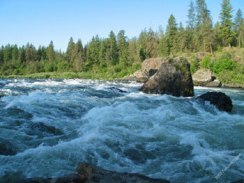The official concept of parents was defined by the Montevideo International Convention, held in 1933, and refers to a political unit that has: a) a territory defined, b) an established form of government, c) ability to relate commercially and politically with other nations and d) recognition of others countries.
Therefore, we can note that a country does not necessarily correspond to a particular ethnicity or nation. homogeneous, given that most existing countries are composed of several nations or ethnic groups different. In some cases, there are groups that seek to consolidate their own territory to form their own country, such as the Kurds, the largest nation in the world without a constituted homeland, and the Catalans and Basques, who seek their territorial independence and relation to Spain.
Officially, there are 193 countries attached to the UN (United Nations), which has the power to even approve the constitution or recognition of a new country. For this to happen, first the approval of two-thirds of the General Assembly, formed by all Member States, is necessary, then there must be approval of the Security Council, formed by five permanent members (United States, China, France, United Kingdom and Russia) and five provisional members, chosen every five years old.
Do not stop now... There's more after the advertising ;)
It is worth remembering that there are countries that seek recognition, such as Palestine and Taiwan. The one that most recently achieved this recognition was South Sudan, which became an independent country in 2011.
Many people tend to confuse the concept of country with the notion of state. The State is a legal institution composed of the people, territory and government, being administered by the three branches: executive, legislative and judiciary. The country, on the other hand, involves geographic, historical, cultural, economic, natural characteristics, among other elements, which makes this expression a more generic term.
Therefore, with this section, the objective will be to present the main characteristics of all currently consolidated countries, such as demographic data, economic, territorial, geographic, among others, with emphasis on information such as the GDP (Gross Domestic Product), the HDI (Human Development Index) and other data.
Browse the section and get to know the world a little more!
By Rodolfo Alves Pena
Graduated in Geography


